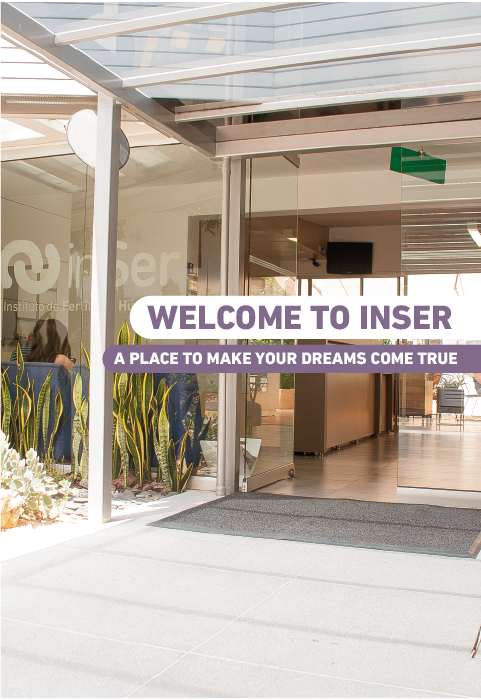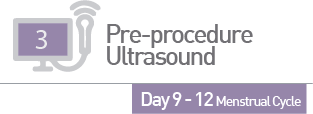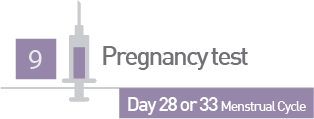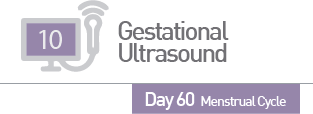
Step by step of your treatment

Contacting INSER
The first step to initiate the journey is to communicate with us to guide you through the process. Our Patient Care team will receive your case and share it with one of our specialists, who will then become your personal medical doctor.
You can write to us or send an email to [email protected]
Medical diagnosis
After we receive your case, the specialist who has been assigned to your case will contact you to begin the diagnosis. Communication with him or her will be direct and you will be able to contact him or her at any time during the process.
Start of treatment in country of residence
Trip to Colombia
It is important that before scheduling your trip that you check with your treating physician to see how long you will have to stay in Colombia for your treatment.
Here are the estimated times for your treatment:
*If your treatment is different from In Vitro Fertilization or Ovodonation, please contact us for personalized advice.
Treatments
Keep in mind that each treatment varies depending on your diagnosis. However, if you are an international patient you can use the following step-by-step guide on In Vitro Fertilization and Ovodonation.
Preparation to start treatment
You begin preparation in your own country. You can arrange this first step with your gynecologist who will coordinate with our specialists, who in turn will communicate with your doctor.
Should you choose to do so, you can also prepare for all your treatment in Colombia.

This ultrasound scan evaluates the current state of the ovaries, discards cysts or any anomalies and counts the number of follicles.
Based on the diagnosis, the formulation of drugs to stimulate the ovary and egg production is initiated.
You have already taken the first step!

In this ultrasound we look at the reaction of the ovaries to the medication and make an evaluation. It may be necessary to modify the dosis of medcation or change the formula.
Little by little, step by step, this is the way to contributing to a safe and successful outcome.

In this ultrasound the folicles are evaluated as to whether they have reached optimum growth in order to continue with treatment.
You are now another step closer to making your dream come true!
Travelling to Colombia for your treatment
We recommend that you arrive at our InSer clinic, the one your choose for your treatment, approximately 10 days before the transfer.

This is a process carried out in the operating theatre under sedation or anaesthesia wherby the eggs are extractd/removed vaginally.The procedure lasts approximately ten to fifteen minutes and the recovery period lasts between sixty to ninety minutes.
There is no need for any sense of disability after the procedure. You will be able to go out and about as usual (following the doctor’s recomendations and advice).

The man gives the semen sample, which can be taken at home or on INSER’s premises.
The sperm are taken to the laboratory, where they are filtered, prepared and purified.
At each moment you are closer to fertilization!

We inseminate the eggs with the sperm in the laboratory and monitor the process of fertilization and growth of the embryos, which are left to grow in the laboratory for 3 to 5 days before the transfer.
In some cases it is necessary to perform a process called ICSI, where the sperm are injected directly into the eggs.
Here is where we see the magic at work!

This is an outpatient procedure without anesthesia in a procedure room where the embryos are transferred to the patient’s uterus after placement of a vaginal speculum with a thin catheter guided by a transabdominal ultrasound. The duration of the procedure is approximately 15 minutes and approximately one hour of bed-rest recovery time is required.
The patient is discharged with medication to help the embryos implantation.
Now you have life in your tummy!

Any remaining good quality embryos not transferred in the cycle are subjected to a cooling process (vitrification) and storage for use in future transfers.
There are always more chances/possibilities
You return to your country and wait for that most desired positive result

Fourteen days after the transfer, it is advisable for the patient to have a blood pregnancy test.
Whenever possible, the pregnancy hormone levels in the blood are monitored and an ultrasound is scheduled a few weeks later. Remember to send the result to your InSer doctor!

Fifteen days after the confirmation of the pregnancy, a last ultrasound scan is carried out to determine the state of the embryo and embryos and the placement/attachment in the uterus.
Your health and that of your baby is the most important thing!
Preparation to start treatment
You begin preparation in your own country. You can arrange this first step with your gynecologist who will coordinate with our specialists, who in turn will communicate with your doctor. Should you choose to do so, you can also prepare for all your treatment in Colombia.

Once you have the doctor’s approval for the start of treatment, and the written consent and tests for current infections done, you can then proceed to choose the donor at least one month in advance.
This is the beginning of a wonderful experience!

As a preparation for the transfer of frozen embryos, we provide the patient with medication prior to the time of menstruation.
You have begun this wonderful journey!

In this ultrasound, the endometrial reaction to the medication is evaluated, the dose of medication can be modified or the formula changed; 2 or 3 more ultrasounds are done before the transfer is scheduled. This preparation takes 3 to 4 weeks.
Little by little , step by step ensuring a secure and safe outcome!
Travelling to Colombia for your treatment
We recommend that you arrive at our InSer clinic, the one your choose for your treatment, approximately 10 days before the transfer

In these ultrasounds the reaction of the endometrium to the medication is evaluated, the dose of the medication can be modified or the formula changed, then the date of the transfer is scheduled.

The donor’s eggs are made ready to be inseminated with the husband’s or donor’s sperm should this be the case.
At each moment closer to fertilization!

The man provides the semen sample, which can be taken at home or at INSER’s facilities.
The sperm are taken to the laboratory, where they are filtered, prepared and purified

The eggs and sperm are prepared in the laboratory and the fertilization process is monitored until the embryos are formed. They are then left to grow in the laboratory for 3 to 5 days before the transfer.
In some cases it is necessary to perform a process called ICSI, which means that sperm are injected directly into the eggs.
A moment of magic occurs!

This is an outpatient procedure without anesthesia in the procedure room. There the embryos are transferred to the patient’s uterus, after the placement of a vaginal speculum with a thin catheter guided by transabdominal ultrasound. The treatment lasts approximately 15 minutes and the patient then rests for approximately one hour in bed.
The patient is discharged with medication to help with the implantation of the embryos.
Now you have life in your tummy!

Any remaining good quality embryos not transferred in the cycle are subjected to a cooling process (vitrification) and storage for use in future transfers.
There are always more chances/possibilities
You return to your country and wait for that most desired positive result

After the procedure, the patient undergoes a test at InSer’s laboratory or at a laboratory in your city.
It is recommended that you take a blood test as the urine test is often a false negative result. Remember to send the result to your InSer doctor!

Fifteen days after the confirmation of the pregnancy, a last ultrasound scan is carried out to determine the state of the embryo and embryos and the placement/attachment in the uterus.
Your health and that of your baby is the most important thing!


